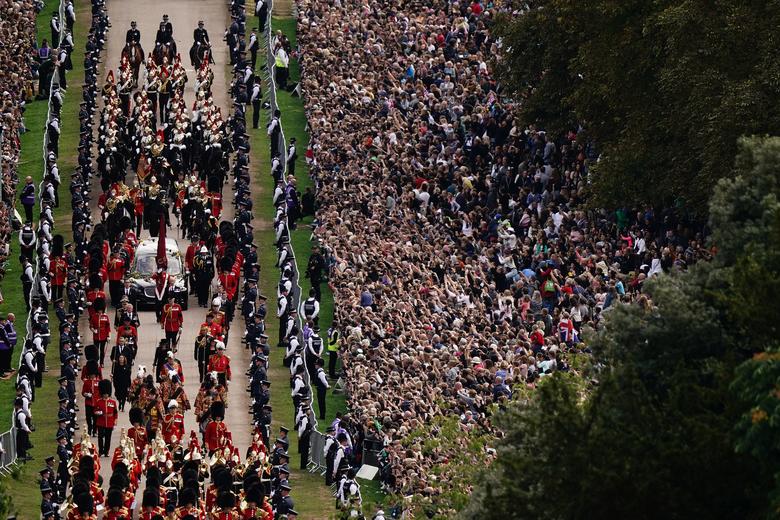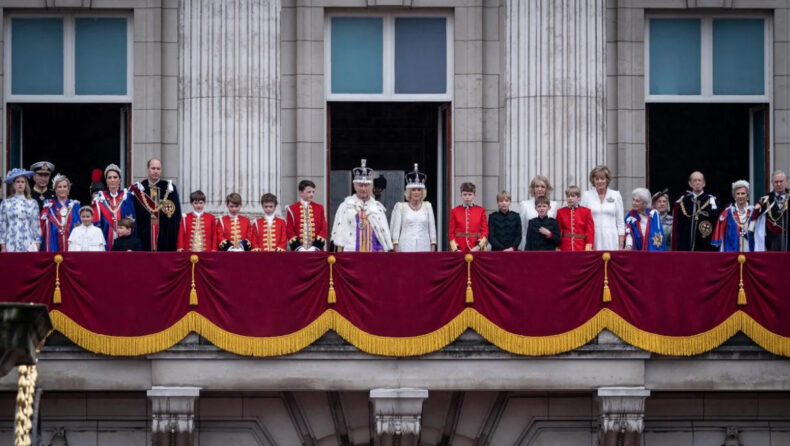The expenditure of the British Royal Household in the year 2022-2024 rose by 5% compared to the previous year, surpassing the Sovereign Grant and other royal-earned income. According to the Sovereign Grant and Sovereign Grant Reserve Annual Report and Accounts 2022-23 released on Thursday, the Royal Household’s net expenditure for the year reached £107.5 million ($136 million). Meanwhile, funding from taxpayers, known as the Sovereign Grant, remained at £86.3 million ($109.1 million), with an additional income of £9.8 million ($12.4 million).
Increased Expenditure Driven by Key Events

Image Source: Reuters
The Royal Household’s spending exceeded the Sovereign Grant by nearly £21 million. Palace officials attribute this excess expenditure to several notable events. The costs were primarily driven by the reservicing of Buckingham Palace, the Platinum Jubilee of Queen Elizabeth II in June 2022, the State Funeral of Queen Elizabeth II in September 2022, and the Accession of The King. The Coronation of Charles III and Queen Consort Camilla in May 2024 also contributed to the high costs.
Funding the British Royal Household’s Expenditure
The primary source of income for the Royal Household comes from the Sovereign Grant, a taxpayer-funded settlement provided as an annual lump sum by the government. This grant is dedicated solely to covering expenses related to the official duties of the King and other members of the Royal Family. The Palace reveals that the Sovereign Grant per person, with a population of 67 million in the United Kingdom, amounts to £1.29 ($1.63).
Additional sources of income are utilised to address official expenditures beyond what the Sovereign Grant covers. These include the income from the Duchy of Lancaster, known as Privy Purse income, income from the Duchy of Cornwall, which supports the private and official expenses of the Household of The Prince and Princess of Wales, and the Royal Collection, consisting of various works of art held by the Sovereign.
Efforts Towards Sustainability
To reduce emissions and achieve a transition to net zero, King Charles has issued an order to the palace staff to lower thermostats, setting room temperatures at 19°C during winter and reducing the temperature to 16°C in vacant rooms. The Sovereign Grant report also highlights a 19% decrease in natural gas and heating emissions at the Royal Household, which can be attributed to targeted initiatives.
Criticism and Defense Surrounding Royal Family’s Spending

Image Source: Reuters
As the United Kingdom grapples with a rising cost of living, anti-monarchy groups have voiced criticism against the royals for their increased spending of public money. The inflation rate in the UK for May stood at 8.7%, with food items experiencing an inflation rate of 18.3%. Many people struggle to afford these rising costs as their wages fail to keep up with inflation. Consequently, questions have been raised regarding the Royal Family’s luxurious lifestyle amidst these financial difficulties.
Graham Smith, the chief executive of Republic, an anti-monarchy campaign group, argues that it is essential to scrutinise the ethics of such expenditure, assessing whether it qualifies as a prudent use of public funds and exploring alternative possibilities for its utilisation. Smith further asserts that the true cost of the royals, estimated to be at least £345 million (£436.3 million), could be used to fund 13,000 new nurses or teachers.
Supporters of the royal family counter these arguments by emphasising the financial and other benefits brought to the economy through increased tourism and consumer spending. They contend that the monarchy plays a role in boosting the economy, benefiting various sectors.













